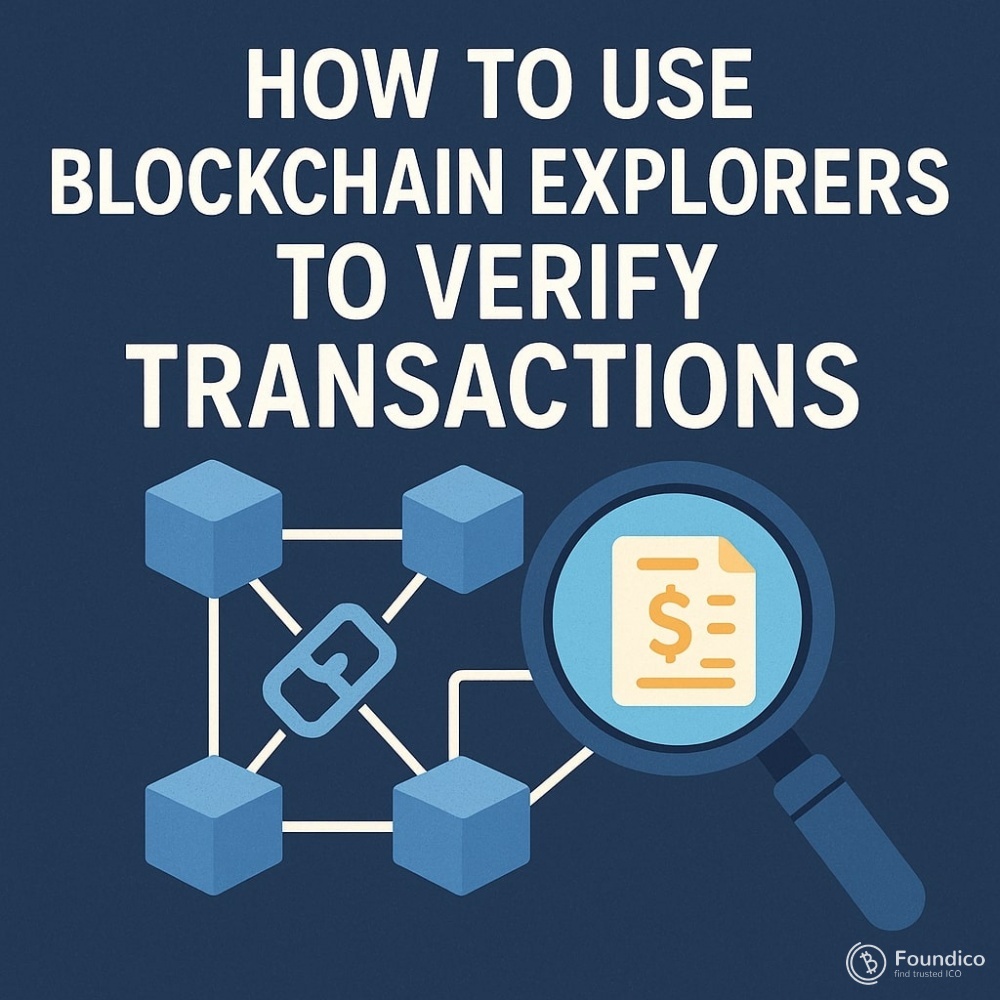How to Use Blockchain Explorers to Verify Transactions

By Dr. Pooyan Ghamari, Swiss Economist and Visionary
Blockchain technology has redefined the way we perceive trust, transparency, and value exchange in the digital age. Unlike traditional financial systems, where banks and intermediaries act as the gatekeepers of transaction records, blockchains are public ledgers that anyone can access and verify. However, to interact with this vast pool of decentralized information, users need specialized tools. This is where blockchain explorers come into play.
Blockchain explorers are web-based applications that allow individuals, businesses, and researchers to view and track blockchain transactions in real time. They provide an accessible interface to the underlying data, turning complex cryptographic records into understandable and actionable insights. For anyone involved in cryptocurrencies—whether as an investor, trader, or institution—knowing how to use blockchain explorers to verify transactions is essential.
What is a Blockchain Explorer?
At its core, a blockchain explorer is akin to a search engine for blockchain networks. Just as Google allows you to find websites by typing in keywords, a blockchain explorer enables you to search for specific data on a blockchain, such as:
-
Transaction IDs (TXIDs)
-
Wallet addresses
-
Block numbers and hashes
-
Smart contract activity
-
Network statistics (fees, confirmations, and difficulty levels)
Some of the most well-known blockchain explorers include Etherscan (Ethereum), Blockchain.com (Bitcoin), and BscScan (Binance Smart Chain). Each blockchain typically has its own dedicated explorer, tailored to its unique architecture.
Why Verify Transactions with an Explorer?
Verification is one of the most powerful features of blockchain technology. Here are some of the reasons why users turn to blockchain explorers:
-
Transparency – Anyone can confirm whether a payment has been sent or received without relying on third-party claims.
-
Security – By verifying details, users can ensure they are not victims of fraud or double-spending.
-
Auditability – Businesses and regulators can audit transactions to ensure compliance and accurate reporting.
-
Peace of Mind – Individuals gain confidence by knowing their transaction is confirmed and irreversibly recorded.
Step-by-Step: Verifying a Transaction
Let’s walk through the general process of using a blockchain explorer to verify a transaction.
1. Obtain the Transaction ID (TXID)
When you send or receive cryptocurrency, your wallet or exchange typically generates a unique identifier called the Transaction ID. This is a long alphanumeric string that acts like a receipt for your blockchain transfer.
2. Access the Appropriate Blockchain Explorer
Choose the correct explorer based on the cryptocurrency you are using. For example:
-
Bitcoin → Blockchain.com Explorer
-
Ethereum → Etherscan
-
Binance Smart Chain → BscScan
3. Paste the Transaction ID
Enter the TXID into the search bar of the explorer. The tool will instantly pull up all the relevant details of the transaction.
4. Review the Transaction Details
Key information to verify includes:
-
Sender and recipient addresses
-
Transaction amount
-
Timestamp of confirmation
-
Number of confirmations (the more confirmations, the more secure the transaction is considered)
-
Transaction fees paid
5. Confirm Finality
For most blockchains, multiple confirmations are required before a transaction is considered final. For example, Bitcoin often requires six confirmations for large-value transfers. Always ensure the transaction has passed the necessary threshold before assuming it is complete.
Advanced Uses of Blockchain Explorers
Beyond basic verification, blockchain explorers offer advanced features that can benefit professionals and institutions:
-
Tracking Wallet Activity – Investors can monitor large wallet movements, often referred to as “whale tracking.”
-
Analyzing Gas Fees – On Ethereum and similar chains, explorers provide data on gas fees, allowing users to optimize transaction costs.
-
Smart Contract Insights – Developers can verify contract interactions, ensuring transparency in decentralized applications (dApps).
-
Compliance & Forensics – Regulators and auditors use explorers to trace funds, investigate suspicious activity, and enforce compliance.
Challenges and Limitations
While blockchain explorers are powerful, they also have some limitations:
-
Privacy Concerns – Although wallet addresses are pseudonymous, repeated use can reveal user behavior patterns.
-
Complexity – For newcomers, the data can be overwhelming without proper understanding.
-
Dependence on Third-Party Interfaces – Explorers themselves are centralized services, even if the blockchain they display is decentralized.
Blockchain explorers empower individuals and institutions to independently verify transactions, ensuring transparency, accountability, and security in the digital economy. They act as a bridge between the cryptographic foundations of blockchain and the everyday user seeking clarity.
As we move toward a more decentralized financial ecosystem, the ability to read and interpret blockchain data will become as fundamental as using online banking today. Mastering blockchain explorers is not just a skill—it is a necessity for anyone who wishes to participate responsibly in the future of finance.
✍️ By Dr. Pooyan Ghamari, Swiss Economist and Visionary

 Pepenode - Pepenode is a utility meme coin token designed to power the Pepenode ecosystem, a gamified virtual mining platform for meme coins
Pepenode - Pepenode is a utility meme coin token designed to power the Pepenode ecosystem, a gamified virtual mining platform for meme coins